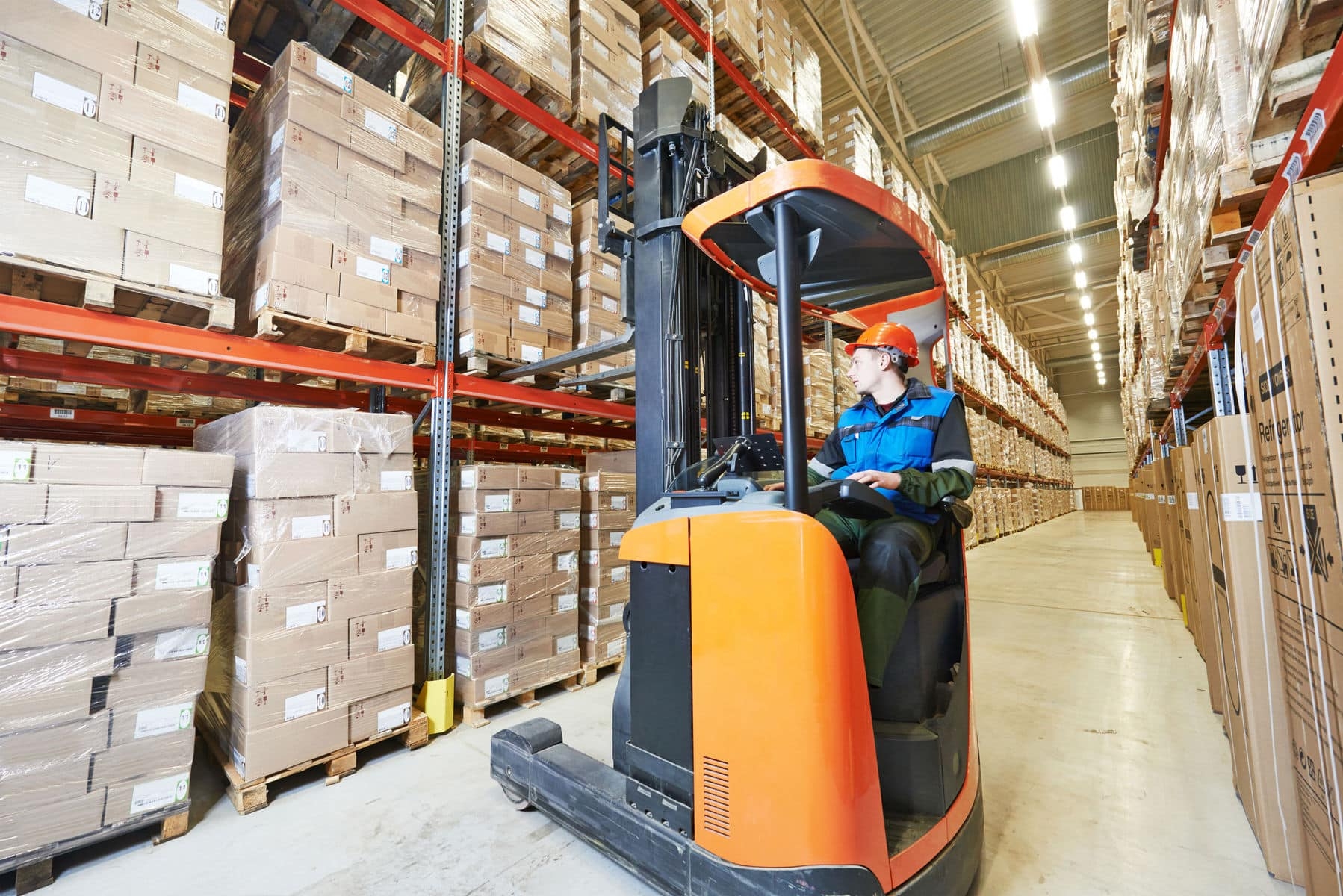
The aim of this article is to provide ladder safety guidance relating to the Code of Practice that has been published by the Ladder Association. The Code of Practice was produced in partnership between the HSE and the Ladder Association to help employers and employees to take and understand the necessary precautions in order to use ladders safely within the workplace, furthermore, the guidance does touch upon using ladders at home and how this guide can help support users using ladders safely within their own home.
Ladder Safety
The Code of Practice relates to portable ladders and not those that are fixed such as loft or attic ladders, fixed ladders for manholes etc. The Code of Practice relates to portable ladders that have been manufactured to an approved standard such as EN 131, which carry certification marks from a third-party certification.
The Code of Practice has 33 sections and is grouped into 6 topic areas which include:
- Foreword and Introduction
- Before Starting Work
- Using a Ladder
- Taking Care of Ladders
- Training
- Appendix
The Code of Practice is a guidance document and by complying and following the information contained within will help enable employers meet their legal obligations under a variety of health and safety legislation which includes but not limited to:
- The Health and Safety at Work etc. Act 1974
- The Work at Height Regulations 2005 (as amended)
- The Management of Health and Safety at Work Regulations 1999 (as amended)
- Provision and Use of Work Equipment Regulations 1998
- The Personal Protective Equipment at Work Regulations 1992 (as amended)
Falls from Height & Ladder Safety
Falls from height are still one of the most common causes of workplace fatalities and many involve someone working from a ladder. There are many reasons why someone may fall from a ladder but some of the leading causes are unsafe equipment, users not trained in the safe use of ladders, and poor management.
When a fall from a ladder does happen, the effect that it can have upon the injured person and the injured person’s family and friends can be life changing. By employers and employees following the step-to-step Code of Practice can help reduce that chance of a fall occurring which in return can save lives, reduce absenteeism, and save associated business costs.
We will discuss the 6 ladder safety topic areas separately and what is entailed within that area.
1. Introducing the Code of Practice
This section introduces the reader to the Code of Practice how it applies, reference to legislation, and a summary of training, the types of ladders available and the user’s literacy, fitness and health. The Code of Practice will later explain some of these in detail.
Firstly, you must decide whether you can avoid working at height, if you cannot avoid working at height then you must decide on the most suitable access equipment; ladders should never be automatically your first choice when it comes to working at height.
If you do choose to work from a ladder, you must ensure it is of the right type for that task and know how to use that type of ladder safely. There could be some falls from ladders that are as a result of an individual having an underlying health condition which has led them to suffer a medical episode whilst working at height, therefore, health screening questionnaires are an important tool to establish that the users of the ladders are in good health and physically fit.
Section 7 within the Code of Practice briefly discusses each type of ladder and their certification.
2. Before Starting Work
This section focuses all on the planning stage before the work is carried out. This section is vital, because if the wrong piece of equipment is chosen which has not been assessed for the task could have devastating consequences.
Before any work can commence, a risk assessment must be carried out. Within the Code of Practice, they have derived an acronym ‘STEP’ which will help you with the completion of the risk assessment. For each part, the Code of Practice asks the assessor some questions which will be helpful in the completion of their assessment to ensure that the work can be carried out safely.
Site – This is where the assessor is looking at the working area where the proposed works will take place.
Task – This is where the assessor will look at the nature of the job, the equipment and materials involved, the length of working at height, loads placed upon the ladder etc.
Equipment – This is where the assessor will establish the type of ladder that is suitable for the task, as there are so many varieties of portable ladders it is important that the right size and material is selected for the task.
People – This is where the assessor will ensure that the user carrying out the work on the ladder is in good health and physically fit. They will also look at how many people are required to do the job and for those using the ladders are the people competent. As part of the assessment the assessor will consider any requirements of PPE to be worn and how the ladder is planned to be secured.
By following the principles of the acronym ‘STEP’ you should have completed a detailed risk assessment. The information contained within the Code of Practice, will be able to help provide guidance on the answers to the questions that have been asked in relation to each part of ‘STEP’.
As part of the planning stage, you need to establish the most appropriate access equipment and establish if a ladder is the right piece of equipment, linking back to an earlier point, ladders should not be automatically selected as the first choice of equipment. If the task is of low risk and of short duration which is defined as not staying on a ladder for longer than 30 minutes could be a justifiable reason it is right to use a ladder.
There are two classes of ladders, Non-professional and Professional which both conform to EN 131. Professional ladders are designed for withstanding more demanding conditions whereas a Non-Professional ladder is for lighter work, where it is of occasional use these are designed for the home environment and not a workplace. Both the professional ladders and the non-professional ladders can hold a maximum total load of 150kg, and this includes the user, their tools and/or materials and any equipment.
However, you may find within your workplace that you have ladders that are of the previous standards, BS 2037 and BS 1129 together with old versions of EN 131.
- Domestic
- Trade/Industrial
- Industrial
These have now been withdrawn and replaced with the current EN 131 standard for Non-Professional and Professional. If your ladders are of the old classifications, they can still be used as long as they remain in good condition and are fit for purpose.
If you are purchasing ladders or hiring ladders you must be provided with the user instructions. It is important that the user instructions are read before using the ladder and that they are also read in conjunction with the Code of Practice and risk assessments.
One of the key sections under this topic heading is the pre-use checks, users must be carrying out a visual and functional check each time before using the ladder even if it is hired. As mentioned earlier, it has been found that one of the leading causes for accidents is unsafe equipment, by inspecting the equipment before use will ensure that any obvious defects are identified and that the ladder is taken immediately out of use if defects are identified. These pre-use checks do not need to be recorded.
The final sections to this topic area are all in relation to setting up the ladders and stepladders correctly and how they should be secured to prevent movement of the ladder.
3. Using a Ladder
This section begins with essential ladder safety, how to safely move up and down a ladder and leading onto working from a ladder. It is important that the user of the ladder can maintain three points of contact wherever possible, where both hands need to be free for a very brief period such as to hammer a nail in then further measures must be implemented to prevent a fall.
Within this topic area, there is a section on hazards. Employees going to work from ladders must check the weather forecast first before any work at height can be completed. Adverse weathers conditions can affect the safety of the ladder and stability of it. Employees must never work from a ladder if there is any risk of lightening. If the weather conditions are poor, the work should be delayed.
Some of the other hazards that may arise from the use of ladders include but not limited to:
- Over-loading
- Instability
- Overhead obstructions
- Electricity – electrocution
Back at the planning stage, the area and task must be assessed to determine the risk of electrocution. Employees should never work within 6m horizontally of any overhead powerline unless it has been confirmed that it has been made dead or protected with insultation. If employees are to work with electricity, they must use a fiberglass or timber ladder.
Employees who are tired, are at greater risk of harm occurring and should not use a ladder when tired and when employees are starting to suffer the effects of fatigue/tiredness they should stop work and take regular breaks.
In addition, this topic area discusses using ladders for access and certain types of ladders which include roof ladders, telescopic ladders and multi-hinge joint ladders.
4. Ladder Safety & Taking Care of Ladders
Ladders can become easily damaged, and deterioration can occur if they are not stored correctly. To reduce the risk of someone falling from a damaged ladder a detailed inspection should be carried out periodically even if it is hired by a competent individual. Competence is defined as someone who has completed relevant training, has the practical and theoretical knowledge and experience.
The frequency of inspections depends on the level of use of the ladder. If a ladder is used on a daily basis a detailed inspection should be carried out every 3-months. If the ladders are used for occasional use, weekly basis, then a detailed inspection should be carried out every 6-months. Finally, if the ladder is infrequently used, less than monthly, then a detailed inspection should be carried out every 12-months. If the ladder is part of the scaffolding system, then it has to be subject to a detailed inspection every 7-days to comply with the scaffolding inspection requirements. These detailed inspections should be recorded and stored securely to prevent them being tampered with.
Within this topic area it discusses how to transport ladders safely to prevent damage and that they do not fall off in transit. In addition, it also looks at the manual handling issues with carrying ladders, as ladders come in a variety of lengths some ladders will need to two people to carry them horizontally. Prior to moving a ladder, a risk assessment should be carried out for manual handling in order to protect the user and others and also to ensure that the equipment will not become damaged.
The final two sections discuss storage and maintenance and provide information on how to safely store them without running the risk of the ladders being used by unauthorized persons such as children.
5. Training
This section of the Code of Practice outlines the courses that are available from the Ladder Association approved training centers which are nationwide.
Anyone using a ladder must be competent in its use. Supervisory staff must be competent in the use of ladders especially when they are supervising workers. If an employee is being trained in-house on how to use the ladder safely then the individual delivering their training must be competent.
6. Appendix
The last section of the document has a few illustrations which demonstrate the safe way of working on ladders and step ladders and also the wrong way of working on a ladder and step ladder.
To conclude, the Code of Practice is a guidance document that will help support employers and employees meet their legal obligations and reduce the risk of a fall occurring. The document is not designed to be used in place of training; however, it should be used in conjunction with training and act as a reference following training.
Within each section, there is a text box, referred to ‘at a glance’ which briefly highlights the key points a user of a ladder or the employer should understand. The document is an easy guide to follow with illustrations which show good and poor practices.
Get expert advice and support to help you deal with ladder safety issues and implementing the new Code of Practice. Get in touch with our team of Health and Safety Consultants.





